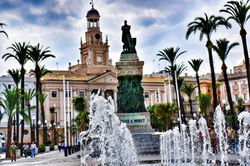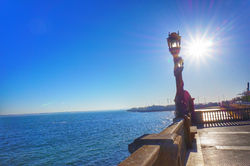
Cádiz
 Guide to Andalusia - Cadiz |  Guide to Andalusia - Cadiz |
|---|---|
 Guide to Andalusia - Cadiz |  Guide to Andalusia - Cadiz |
 Guide to Andalusia - Cadiz |  Guide to Andalusia - Cadiz |
 Guide to Andalusia - Cadiz |  Guide to Andalusia - Cadiz |
 Guide to Andalusia - Cadiz |  Guide to Andalusia - Cadiz |
 Guide to Andalusia - Cadiz |  Guide to Andalusia - Cadiz |
 Guide to Andalusia - Cadiz |  Guide to Andalusia - Cadiz |
 Guide to Andalusia - Cadiz |  Guide to Andalusia - Cadiz |
 Guide to Andalusia - Cadiz |  Guide to Andalusia - Cadiz |
 Guide to Andalusia - Cadiz |  Guide to Andalusia - Cadiz |
 Guide to Andalusia - Cadiz |  Guide to Andalusia - Cadiz |
 Guide to Andalusia - Cadiz |  Guide to Andalusia - Cadiz |
 Guide to Andalusia - Cadiz |  Guide to Andalusia - Cadiz |
 Guide to Andalusia - Cadiz |  Guide to Andalusia - Cadiz |
 Guide to Andalusia - Cadiz |  Guide to Andalusia - Cadiz |
 Guide to Andalusia - Cadiz |  Guide to Andalusia - Cadiz |
 Guide to Andalusia - Cadiz |  Guide to Andalusia - Cadiz |
 Guide to Andalusia - Cadiz |  Guide to Andalusia - Cadiz |
 Guide to Andalusia - Cadiz |  Guide to Andalusia - Cadiz |
 Guide to Andalusia - Cadiz |  Guide to Andalusia - Cadiz |
 Guide to Andalusia - Cadiz |  Guide to Andalusia - Cadiz |
 Guide to Andalusia - Cadiz |  Guide to Andalusia - Cadiz |
 Guide to Andalusia - Cadiz |  Guide to Andalusia - Cadiz |
 Guide to Andalusia - Cadiz |  Guide to Andalusia - Cadiz |
 Guide to Andalusia - Cadiz |  Guide to Andalusia - Cadiz |
 Guide to Andalusia - Cadiz |  Guide to Andalusia - Cadiz |
 Guide to Andalusia - Cadiz |  Guide to Andalusia - Cadiz |
 Guide to Andalusia - Cadiz |  Guide to Andalusia - Cadiz |
 Guide to Andalusia - Cadiz |  Guide to Andalusia - Cadiz |
 Guide to Andalusia - Cadiz |  Guide to Andalusia - Cadiz |
 Guide to Andalusia - Cadiz |  Guide to Andalusia - Cadiz |
 Guide to Andalusia - Cadiz |  Guide to Andalusia - Cadiz |
 Guide to Andalusia - Cadiz |  Guide to Andalusia - Cadiz |
 Guide to Andalusia - Cadiz |  Guide to Andalusia - Cadiz |
 Guide to Andalusia - Cadiz |  Guide to Andalusia - Cadiz |
 Guide to Andalusia - Cadiz |  Guide to Andalusia - Cadiz |
 Guide to Andalusia - Cadiz |  Guide to Andalusia - Cadiz |
Cadiz did not convince me for a long time. After the first, quick visit of this oldest city in Western EuropeI was disappointed, like some tourists coming here.
I was waiting a long time to conjure this place up ... definietly too long!
Legend has it that the city was founded by Heracles, while history points to the date of 1110 B.C.E. (some sources give the date 1004 B.C.) when Phoenicians founded their fishing village called Gadir. Their heritage was taken over by Carthaginians, Romans, Visigoths and Moors, but they made the rapidly growing commercial port almost forgotten. Nevertheless when Christopher Columbus decided to start here his second and fourth journey in search of America, the city came alive again and became a center of trade with the New World. Money flowing from the Americas allowed not only to rebuild after the English invasions, but also to enter Cádiz into the golden age, during which in 1812. the first Spanish constitution was adopted.
Actually, everything that should be seen in Cadiz is located in the old part of the city, located on the Atlantic Ocean promontory, separated from the new part, by the walls and gate of Puertas de Tierra. The area of Cadiz is relatively small, only 12.10 km², so in one day we are able to see practically everything.
Certainly, our walk should start with the golden, characteristic dome of Catedral Nueva at Plaza de la Catedral. Baroque cathedral of St. The cross built in 1722-1838 is one of the largest in Spain and has become a reference point for sailors. Despite the combination of styles, i.e. baroque, rococo and neoclassical, its interiors are not enchanting, but it is certainly worth going to its belfry Torre de Poniente, from which there is a low view of the whole city. To the east of the New Cathedral designed by Vincent Acer, is Iglesia de Santa Cruz, known as the Catedral Vieja (Old Cathedral), which erected in place of the former mosque was completely burnt down in 1596. after the capture of Cadiz by the English. The church served as a cathedral until 1838. and what we can see today is only a seventeenth century reconstruction. Right behind the church we find the ruins of Teatro Romano from the 1st century BC , and between the cathedrals there is the 16th century Bishop's House (Casa del Obispo), in whose basement a glass floor will show us Phoenician remains from the 7th century BC. Going further along Calle Pelota to the north we will reach the main square of the old city, which is Plaza San Juan de Dios together with the large town hall (Ayuntamiento).
It is worth stopping here for coffee or ice cream to not only feel the atmosphere of the city, but also soak up the sun and Spanish architecture. Heading west from the square we will reach Plaza de las Flores and Mercado Central, where we will buy not only fresh seafood, but also churros traditionally sold in stalls. From there it is not far to the highest tower Torre Tavira, rising 45 m above the ocean level, where Camere Oscura was installed - an optical device composed of a screen on which the image transmitted by means of a mirror and magnifying glass is displayed. It is also a place where the panorama of the city is at our fingertips, because from here you can see not only the port and the ocean, but also lower watchtowers or obstructions. In the eighteenth century, they were a symbol of prestige and wealth, serving as a good observation point for arriving ships, as well as serving as the proverbial "window on the world". Coming out of the buildings towards the south we will reach the promenade stretching along the Atlantic Ocean, which will lead us to the charming beach - Playa la Caleta with the wonderful spa Balneario de la Palma. Sitting on the beach we will see bastions and defensive fortresses, i.e. Castillo de San Sebastian, which is legendary that he was the temple of Kronos and Castillo de San Catalina. Walking further along the coast we come across the largest park in Cadiz and rich in vegetation - Parque Genoves, which in the eighteenth century was called "Petrushka Park", because there was practically nothing there.
Cadiz surprises with calmness. Visiting the city through sleepy, narrow streets you have a sense of authenticity and passing time. You can see here the symbols of the former splendor of the city and the old, close relations with the New World, because the climate and architecture of Cádiz resembles Cuban Havana. Certainly, it is also a region of the most beautiful beaches in Europe, such as Playa de la Victoria stretching over a distance of almost 3 km, or even longer Playa de Cortadura, which can be found on the new side of the city. What's more, Cadiz is famous for its bustling Carnival, which is visited by Spanish from all over the country, because the fate of gaditanos (as the locals are described) is characterized by a specific sense of humor.
Cadiz is certainly one of those Andalusian cities that would be a sin to avoid. I did not understand his phenomenon for a long time, but one weekend, a lazy breakfast and a walk through its streets convinced me that the oldest city of Spain deserves my and your attention :)